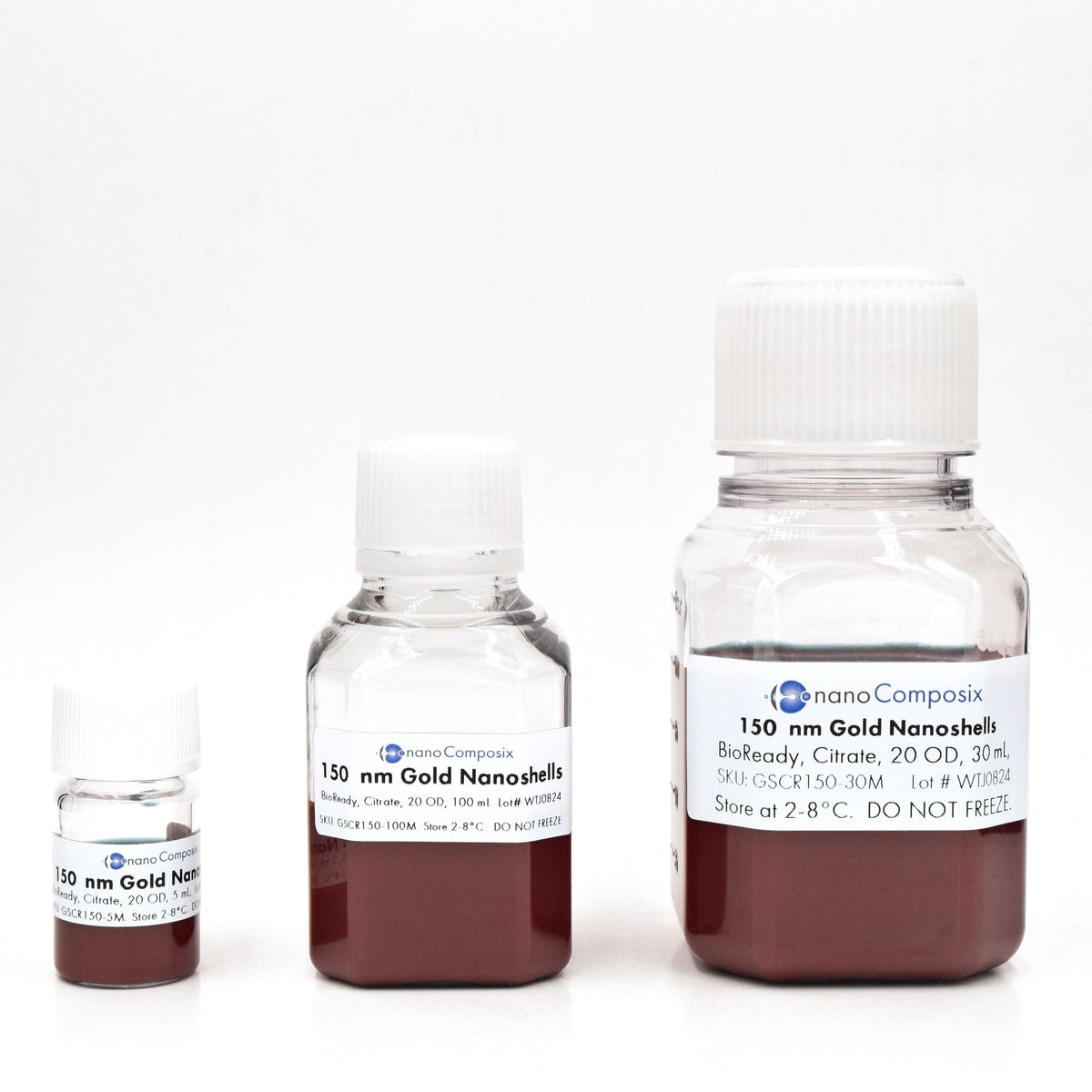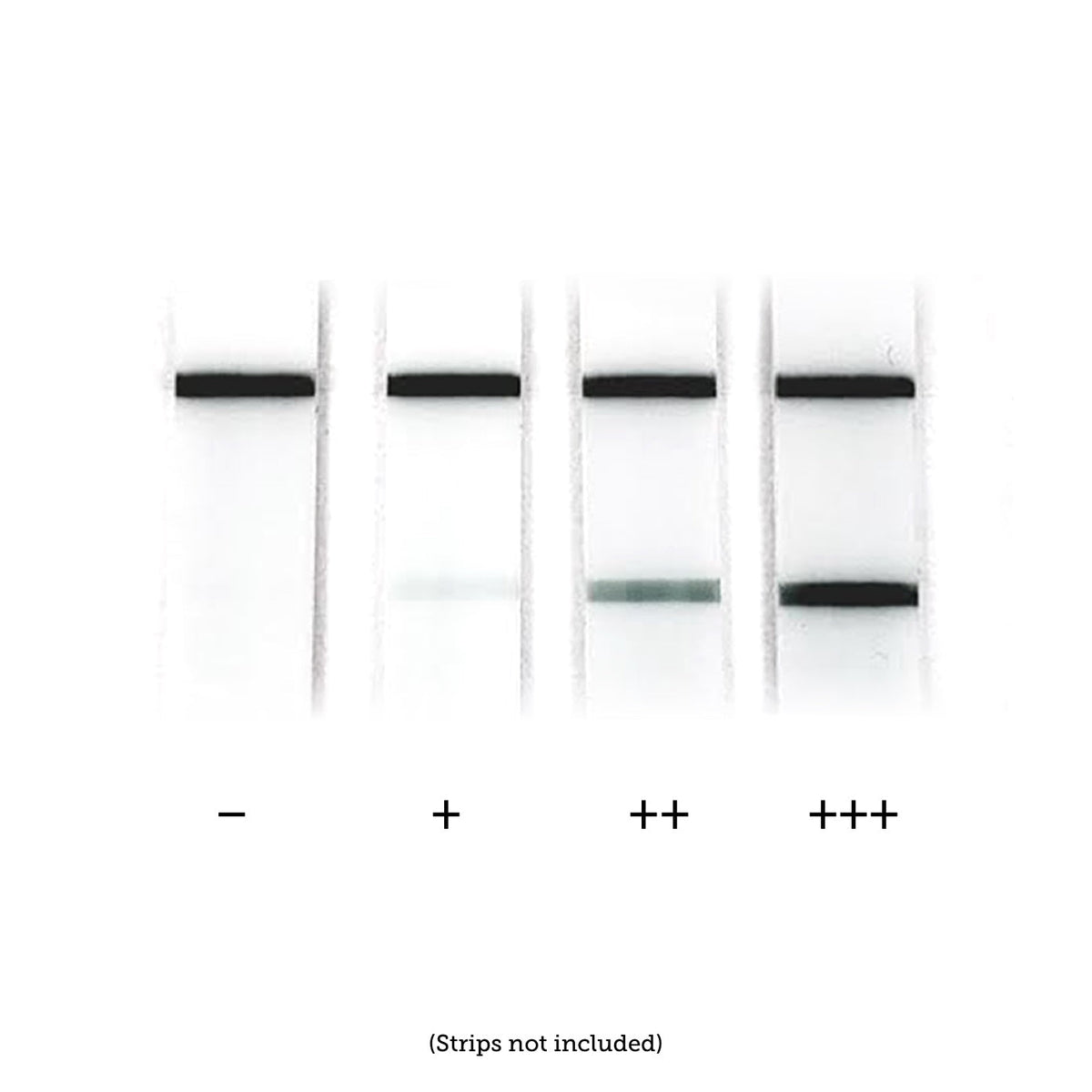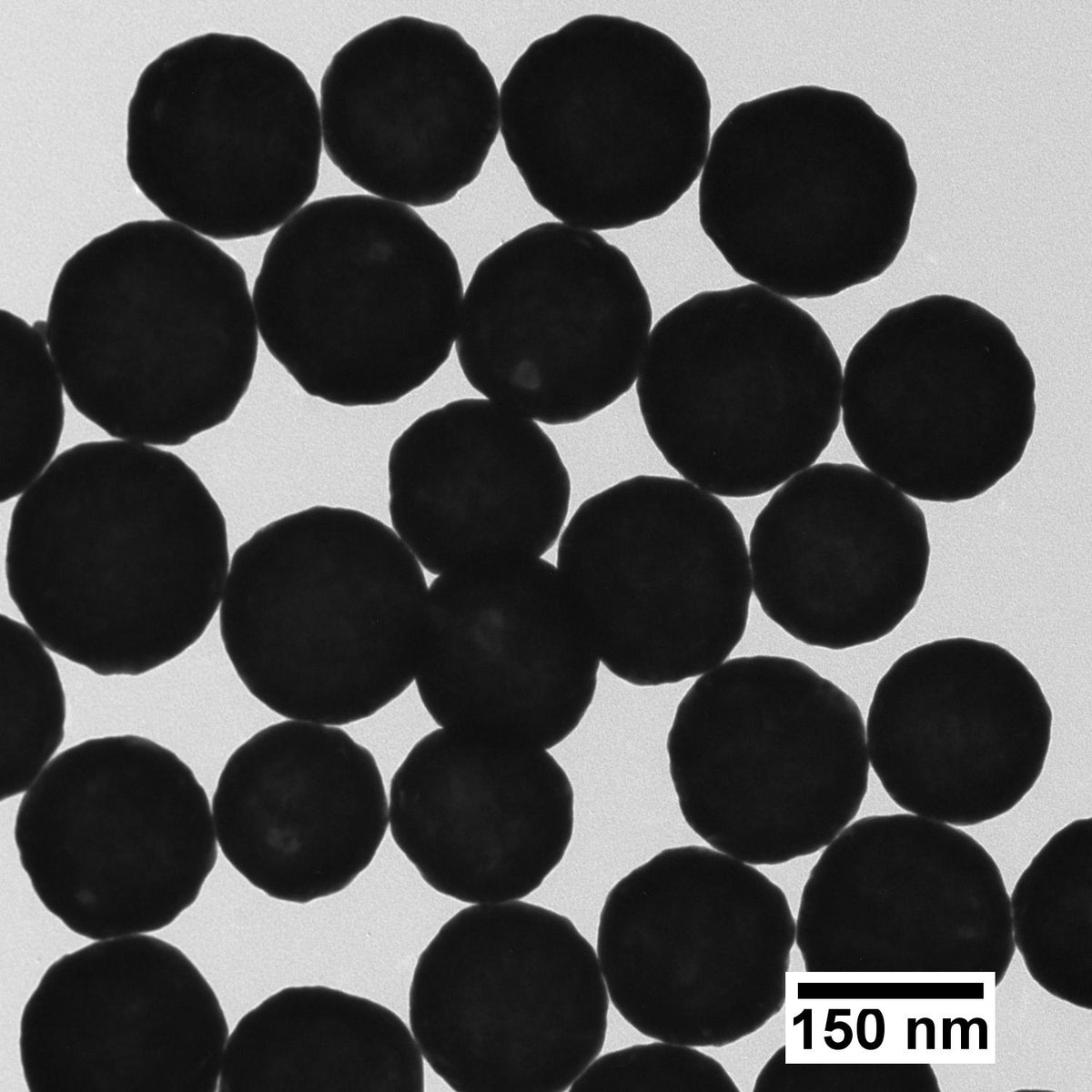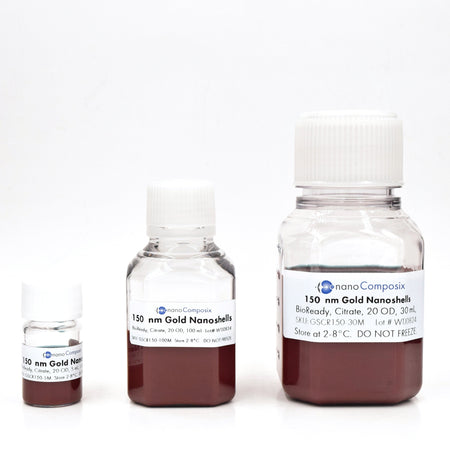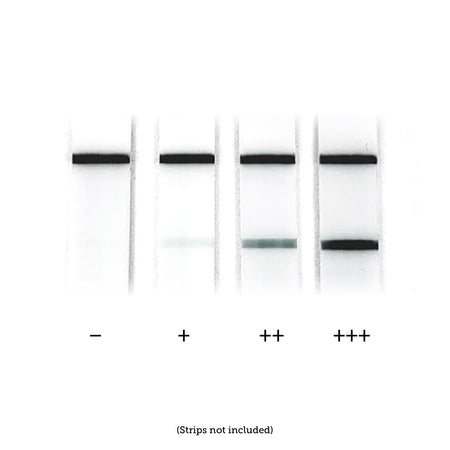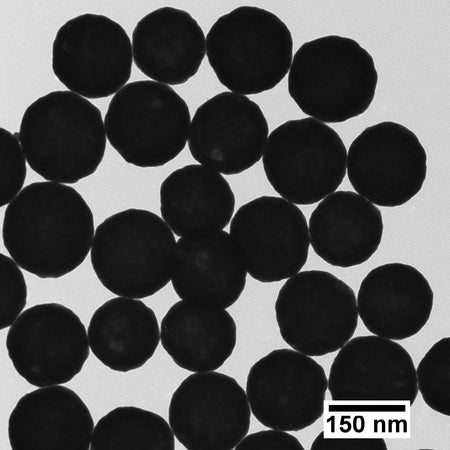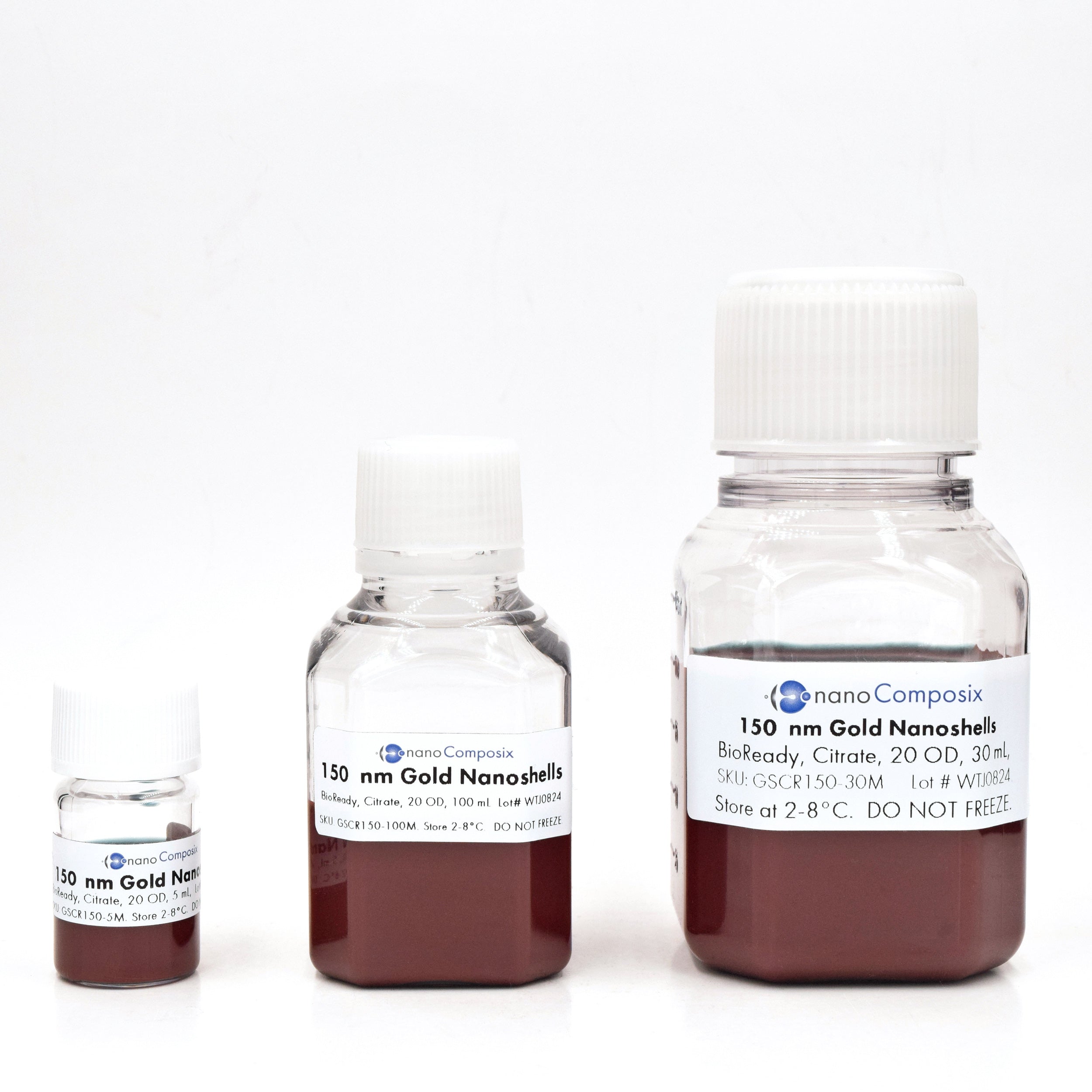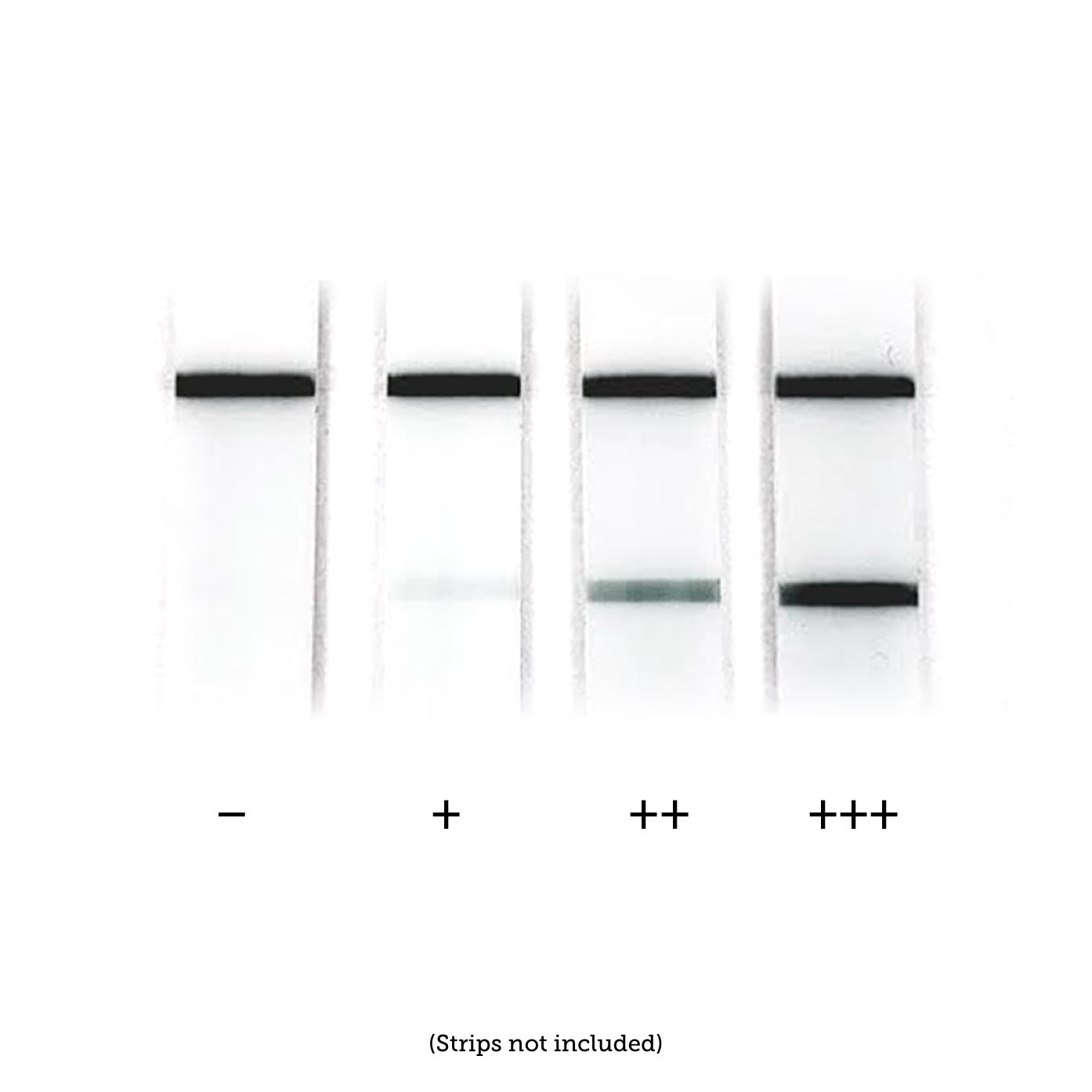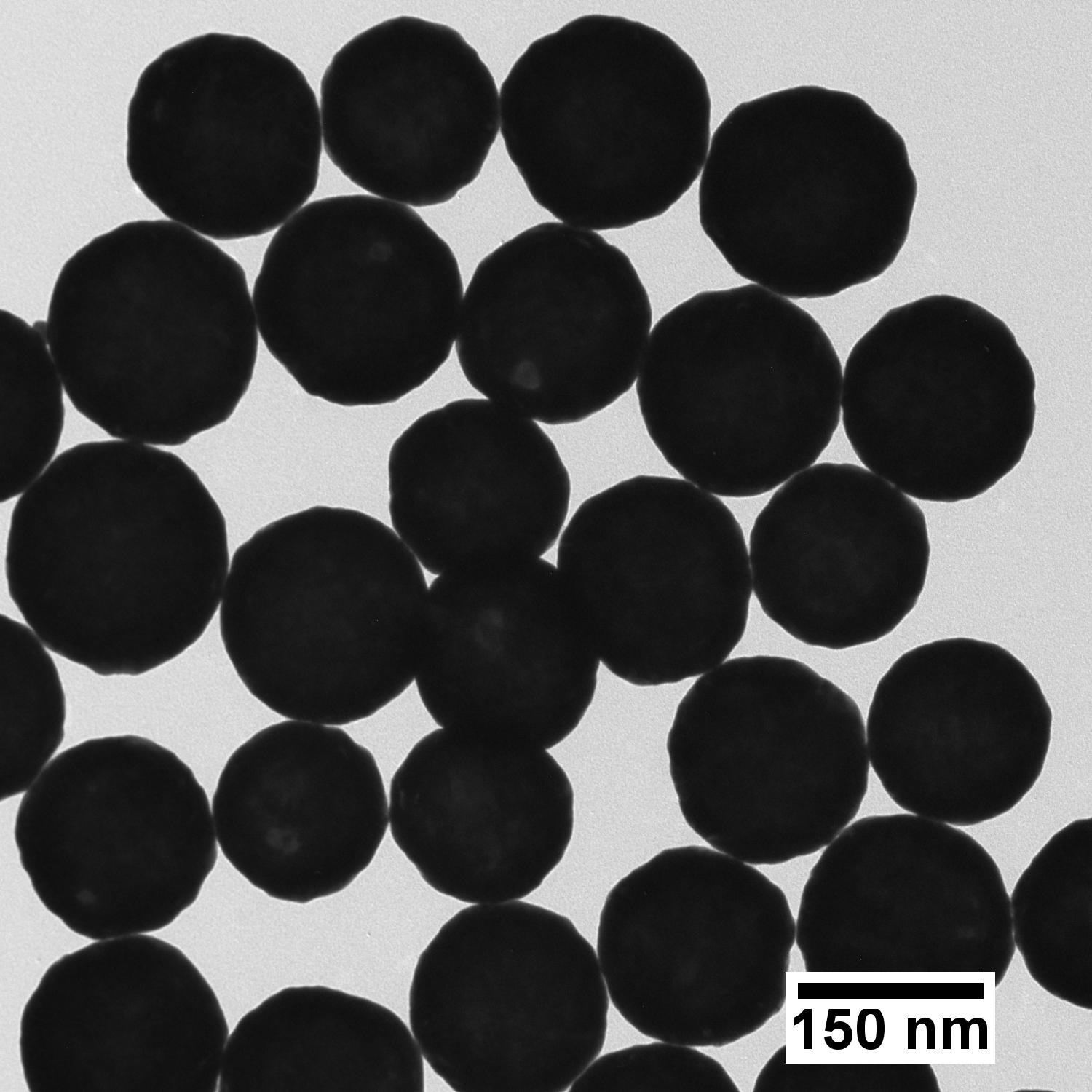150 nm BioReady Gold Nanoshells for Passive Conjugation
Customers outside of the US & Canada: please visit your local distributor’s website to purchase this item using its SKU, or contact us here. Thank you!
As a global leader in gold nanoparticle production, nanoComposix specializes in providing high-purity and monodisperse nanomaterials – delivering the quality you need for consistent results.
150 nm gold nanoshells for passive adsorption combine strong plasmonic optical properties with surface chemistry designed for passive conjugation. These nanoparticles are used in applications such as immunodiagnostics, lateral flow assays, nanomedicine, drug delivery, biosensors, and more.
BioReady Gold Nanoshells enable enhanced sensitivity in lateral flow assays (LFA) due to their intense optical signal. Integration of these nanoparticles into LFAs can provide increased signal-to-noise ratios and lowered limits of detection for your target of interest.
nanoComposix provides high quality nanomaterials that are precisely engineered and highly characterized. All products are supplied with batch-specific CoA’s including TEM, DLS, Zeta, and UV-Vis characterization data.
Intended for Research Use Only. Contact us for custom formulations, ISO 13485/cGMP compliant materials, or bulk supply requirements.
Pricing Conversion
| Volume | Price of 1 mL at 1 OD |
|---|---|
| 5 mL | $1.75 |
| 30 mL | $1.20 |
| 100 mL | $1.02 |
| >100 mL | Contact us for bulk discount |
| Overview | |
|---|---|
| Surface | Citrate |
| Description | Easiest standard surface to displace with other molecules. |
| Solvent | 0.2 mM sodium citrate |
| Surface chemistry | Sodium citrate |
| Specifications | |
| TEM Diameter | 160 ± 15 nm |
| CV | ≤ 15% |
| Documents | |
| Example Certificate of Analysis (CoA) | Download |
| Safety Data Sheet (SDS) | 20 OD (BioReady) |
| Storage & Handling | Download |
| Protocols | Antibody Purification BioReady 150 nm Citrate Gold Nanoshell Passive Conjugation |
| Expected Ranges | |
| Hydrodynamic diameter (DLS) | 145–195 nm |
| Zeta potential | ≤ –35 mV |
| pH of solution | 5.8–8.5 |
| Peak wavelength (λmax) | 730–820 nm |
